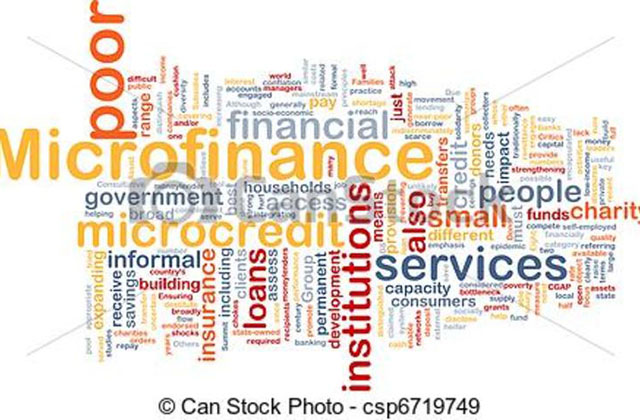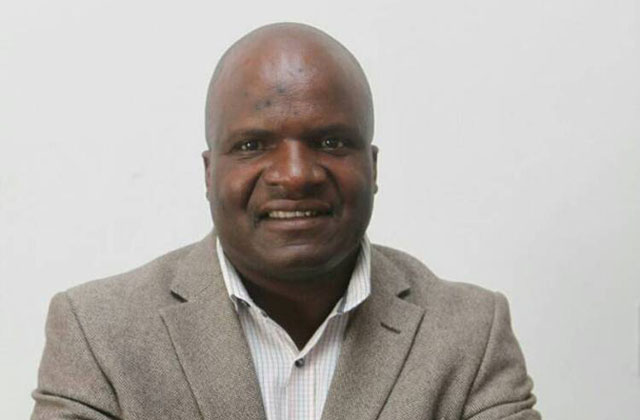To what extent can agricultural economy be driven by microfinance?

Charles Dhewa
Recent information from the Reserve Bank of Zimbabwe (RBZ) shows that the country now has 182 registered Micro Finance Institutions (MFIs), of which four have been registered to take financial deposits.
The number of MFIs is likely to continue growing.
What does this mean for a country that is trying to revive and grow its economy through agriculture and mining?
Since micro finance institutions are famous for high interest rates, are farmers, small scale miners, SMEs and other actors expected to borrow money from MFIs and contribute to economic growth?
The essence of economic growth
Economic growth refers to an increase in a country’s Gross Domestic Product (GDP), expressed through an increase in the amount of goods and service.
The main components of GDP include: Increase in investment (capital). Increase in Government expenditure. Increase in consumer spending. Increase in net exports (extend to which exports are greater than imports).
To what extent do MFIs positively impact each of these components? To what extent do MFIs contribute to an increase in goods and services produced in Zimbabwe?
If the above GDP components increase, they provoke an increase in aggregate demand. Each increase in consumer spending is backed by high salaries and incomes.
There should be an increase in buying power, leading to high productivity.
An increase in Government spending should be seen in the form of social safety nets such as social welfare support services. People who get money or income through social safety nets should join the demand side.
To what extent are MFIs supporting Government in social safety nets? Government spending in infrastructure like roads construction is an expression of GDP. To what extent do MFIs support these activities?
Who do MFIs target?
The main focus for MFIs is providing financial services to the poor and under-banked populations who fail to meet the requirements of bigger financial institutions like banks.
If MFIs ask for pay slips, collateral and other guarantees which are also demanded by big banks, their targeting becomes questionable in terms of their mandates.
How many farmers and traders who are now handling more than 70 percent of food in Zimbabwe can produce pay slips? Ideally MFIs should trigger more consumption spending among the poor and invest at their level, so that they are able to contribute to GDP.
What informs MFI loan and training packages?
There is an assumption that anyone who gets a loan understands loan management. Lack of meaningful capacity building has generated adverse effects for MFIs and borrowers.
MFIs seem more interested in framing loans in terms of interest per day/week/month rather than being informed by the borrower’s business growth. The packages are rarely informed by specific business cycles.
Some MFIs are interested in 20 percent interest per month irrespective of business cycle and nature. Manufacturing, farming and retailing should not attract the same interest and requirements.
Dangers of ignoring the cost of finance
The cost of finance is one factor that can derail economic growth. Ideally, smaller amounts of money should attract reasonable interest.
While big banks may be at seven percent per annum, MFIs could be at 20 percent per month. That kind of interest erodes all the profit potential in ways that impede contribution to economic growth.
Those who borrow at 20 percent per month have to make profits of more than 20 percent in order to cover interest and stay in business. It means for every $100, $20 goes to the interest. Such interest rates are completely anti-economic growth.
Source of finance
The current MFI model is just like taking from Jack to pay Peter.
If an MFI gives five traders $100 each at an interest rate of 20 percent per month, the following month, the MFI is able to use what it earns from the five borrowers to give $100 to the sixth trader.
It means the initial five traders are not growing, but struggling to finance the next loan recipient. In this case, the MFI’s portfolio may be growing at the expense of the poor borrowers who are kept busy under the illusion that they are making progress.
To a large extent, this is a hidden pyramid scheme, presented as an innocent and progressive model. An ideal economic growth model requires external funding to be injected into the MFI sector. Local seed money tends to have a high profit motive. It is more like just taking from one person and giving to the other at a cost.
Where Government takes money from the fiscus and extends money to financial institutions, it is like taking from the tax payers and giving that money to a financier who then loans back to tax payers at high interest.
That has the effect of locking potential consumers in poverty such that they are not able to join the demand side for goods and services towards GDP growth.
Where external funding comes at concessionary rates towards anchoring economic growth, most MFIs find themselves in a conflict of interest because concessionary rates outcompete their traditional models that thrives on high interest.
If a donor puts money in the MFI sector at concessionary rates, there are few takers because MFIs have become used to high interest rates and cannot stand conditions that force them to lower their interests in line with new funding from donors.
There is need for a middle actor to handle development finance. This will avoid situations where MFIs find themselves in a conflict of interest.
Economic growth speaks to sustainable development
Economic growth is about sustainable development. Who is responsible for managing development finances which do not seem to be under the regulatory remit of the RBZ?
There has to be a balance between financial injections from development financiers and RBZ policies to avoid distorting the financial market in ways that trigger inflation (too much money chasing few goods).
One of the reasons why it is difficult to measure MFIs’ contribution to economic growth is because many people take loans from MFIs in desperation to cover issues like school fees, funerals or medical bills.
These are forced circumstances that have nothing to do with investment for economic growth. Such a practice falls on the consumer loans side rather than productive sector side.
It is basically crisis management financing. Being profit-oriented by nature, some MFIs tend to prey on that desperation. They don’t have policies stipulating that “we focus on agriculture only and don’t entertain desperate borrowing”.
Consumer loans end up triggering inflationary tendencies.
For instance, people may borrow during festive seasons like Christmas or just after Christmas to cover gaps caused by uncontrolled consumption during the festive season.
Unfortunately, the greater part of the working population is now locked in crisis management loans where MFI are at the centre. Banks have also joined the bandwagon and have moved out of their mandates. Even agricultural banks now also offer consumer loans.
What type of expertise do MFIs have?
MFIs have to offer support services to borrowers in order to spur economic growth. Traditionally, banks had mentors and advisors who would look at the growth pattern of their clients’ businesses.
Conversely, MFIs and banks now employ fresh university graduates as loan officers who only know about theoretical loan processing and repayment following up.
They don’t have experience in understanding clients’ businesses. How can a fresh graduate in banking and finance supervise a farming business that has existed for more than 10 years? It’s now a syndrome in MFIs to employ loan officers who are merely recent graduates, with no experience of businesses they are supposed to monitor.
Lack of consolidated evidence and need for Ethics in MFIs
What are the key values, models and packages of MFIs as service providers? There doesn’t seem to be a growth path from MFIs to higher financial requirements.
It’s more of a closed and survival pathway where there is no growth. It fuels a temptation to convert borrowed money to other uses. People find it easy to get money from MFIs at a cost and there is so much double-dipping.
Absence of a culture of consolidating evidence is key pitfall for MFIs. They still prefer working in silos. They get into markets like Mbare as individual institutions and leave quietly without sharing experiences with peers.
That is why, although Mbare market has existed for more than 50 years, MFIs have not come up with a best model for working in informal agricultural markets.
Innovation and green fields
Banks and MFIs should embrace innovators with brilliant ideas whose minds have not been contaminated or diluted and have clean records.
By refusing to work with innovators on the pretext that they are green field, financial institutions fail to support innovations that spur economic growth. That is why everyone ends up producing broilers or tomatoes.
Models like group lending, that have become a recipe for most MFIs and even big banks have outlived their usefulness. These institutions should take lessons in behavioural economics and other social sciences.
Bringing together three or five different people is like bunching together five different businesses and expecting them to perform like one business — perform the same, repay on the same day every month, etc.
Even in families people are different. Twins are also very different. No amount of training can change some of the intrinsic behaviours and ambitions. Group lending is proving to be a worse form of collateral. Instead, business viability is becoming the best form of collateral.
MFIs are run by people who used to work in banks and have merely smuggled the same notions of banking into the MFI sector.
There are several conflicts of interest.
It is difficult to re-build the image of a whole sector. Look at what has happened to the insurance sector which many people don’t want to hear about.
MFIs should ask themselves: How do we get to the next level with poor people? They need to understand Internal Savings and Lending institutions (ISALs) and create hybrid models that borrow from modern knowledge and local or indigenous knowledge. They should not cannibalise ISALs, but build contextual hybrid models.
For instance, in rural communities where cash is scarce, there is no point in loaning in the form of cash. Why not facilitate access to inputs and be repaid in the form of commodities which, in most cases have a market. It shouldn’t just be about money.
How MFIs have co-opted the Salary Services Bureau (SSB) Relationships between the Salary Services Bureau (SSB) and MFIs are impeding economic growth by locking civil servants in high interest loans.
As the middle class, civil servants constitute a cluster that can trigger growth and aggregate demand for agricultural goods and services.By sweeping away such buying power and capital base, MFIs become a barrier to economic growth.
When the middle class is financially crippled by consumer loans, demand is weakened and GDP growth stalls. When a large chunk of civil servants’ income is taken by MFIs, demand for commodities goes down.
Charles Dhewa is a proactive knowledge management specialist and chief executive officer of Knowledge Transfer Africa (Pvt) www.knowledgetransafrica.com whose flagship eMKambo (www.emkambo.co.zw ) has a presence in more than 20 agricultural markets in Zimbabwe. He can be contacted on: [email protected] Mobile: +263 774 430 309 / 772 137 717/ 712 737 430.








Comments